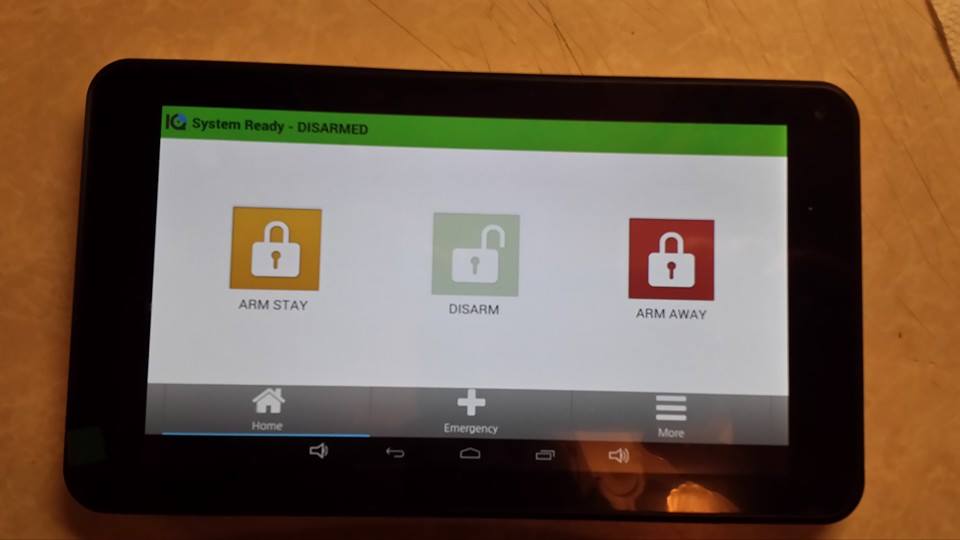I think using WIFI instead of a proprietary wireless channel like 2GIG does is a better decision with much better throughput and higher reliability. Just use a decent WIFI router and an UPS to keep it reliable.
I am not quite sure that this was the best route to go (but since the IQ2 is basically just a repurposed WiFi only tablet, there was no other options).
Let’s imagine for one moment that you are having a medical emergency or home invasion, and make it to that secondary IQ2 panel, but your WiFi router is glitching/malfunctioning, and needs a periodic reboot to work optimally, or has been unplugged, disabled or is suffering from power loss… you are SOL. It is wonderful that the IQ2 panel has battery power and will be on, but if it loses connection to the panel it is useless.
Most people buy a dirt cheap basic wireless router (or rent one from their internet provider), and don’t even know how to properly configure them. In fact most probably use the default settings, and WPS which can result in your network being hacked in less than 15 min or so, by a kid with the free Reaver app who is within range of your SSID broadcast (setting up and using WPS is just about the worst thing you can do).
Router issues means non-functional secondary panel, and hacked network could potentially result in a compromised secondary panel/system.
And as for a uninterruptible power supply, it is unlikely any average homeowner will be utilizing it. So, power loss to your home network WiFi router, means non-functional secondary panel.
I like the TS1 (original version in any event) because it has backup battery power capability (I use rechargeables in mine, and rotate them as the TS1 will burn through AAA’s like crazy), I don’t have to worry about loss of connectivity for WiFi/router network issues, or loss of connectivity in event of a power loss.
I also like the convenience of the PAD1. 5 year battery life, basic keypad with emergency/panic buttons. I use it in the Master bedroom as a secondary backup, and as it is close enough to main CP, I can hear the confirmation tones for arming/disarming with it. I dont have to worry either about whether it will work or not in an emergency die to unforeseen/uncontrollable WiFi router/network issues, or power loss events.
Each keypad has it’s place for optimal use. The trick for me is to minimize downtime/or issues that can result in my system operating less than optimally. I don’t mind the idea of using WiFi/broadband as secondary path, but to rely on it as primary is just asking for complications and trouble (and I deal enough with that with the cameras).
Isn’t that the whole premise behind alarm.com’s prohibition against WiFi only remote interactive services? Why they require cellular as primary communication path? WiFi is unreliable. The IQ2 secondary panel’s sole reliance on WiFi makes it unreliable.

